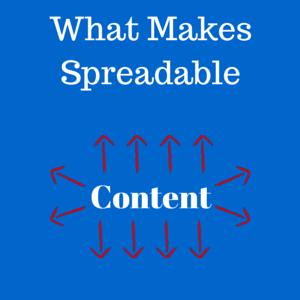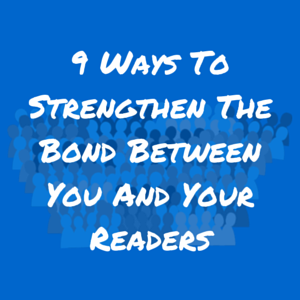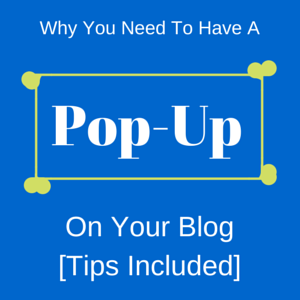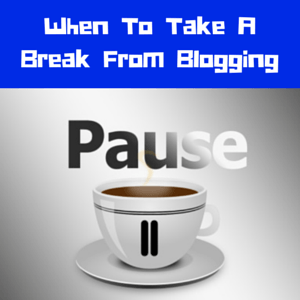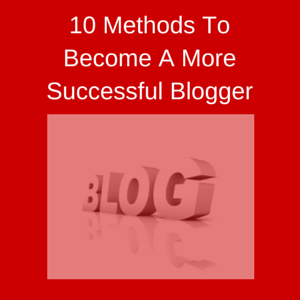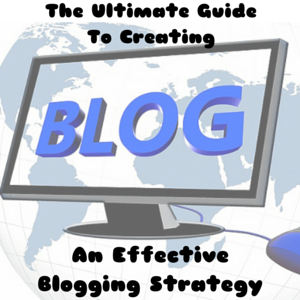
Success consists of various routes. Some people become successful by investing in stocks, singing very well, playing a sport very well, writing very well, or doing something very well that leads to a profit and meaningful, positive recognition. Success on the web also consists of various routes. Some people build their businesses around Twitter while others build their businesses around Facebook.
Although success on the web consists of various routes, 99% of all of the successes on the web have this in common—they all have successful blogs. Blogs are no longer online diaries. They allow you to build relationships with a targeted audience like never before. Blogs are now like business cards—you need them. Many people know that blogs are essential, and numerous people who visit my blog have blogs of their own.
However, having a blog does not guarantee that the blog will become successful or contribute towards your brand’s growth. Having a blog just means you have something that can potentially have a huge impact on your brand. Turning that potential into a reality is the challenge that all bloggers face at the beginning of their journeys. The most successful people who make their revenue on the web turned that potential into reality.
In order to get the same results from your blog, you must have an effective strategy in place. This effective strategy must account for various areas that all contribute towards blog growth, but in particular, it must account for traffic, SEO, social media, and subscribers.
Traffic
Without traffic, your blog won’t have an impact on your brand. You must come up with different methods of boosting your blog’s traffic and then implement those methods to see which methods bring forth the best results. You can use SEO, social media, and an email list to get more traffic, and I believe these three traffic-boosting methods are the most effective methods available. However, when you are first starting out, you need to generate some short-term traffic. Here are some tips that will help you generate the short-term traffic:
- Engage in forums based on the community guidelines. Don’t be over-promotional.
- Comment on viral pins. Your comment will almost always show up on the top since most pins (even the viral ones) get fewer than three comments.
- Encourage your friends and family to share your blog on their social networks. Social media shares will get you more blog traffic from the social networks and Google because social shares are critical factors in Google’s ranking system.
- Write guest posts and ask other bloggers within your niche to mention one of your top blog posts in the future.
- Write a lot of content. Longer blog posts rank better on Google, and updating your blog consistently also helps.
SEO
Once you start generating some short-term traffic, you should start learning more about SEO. My advice with SEO is to approach it with caution. There are thousands of SEO-related articles, and it is easy to get confused with the entire process of optimizing your blog for Google. It took me several years to master SEO, but part of the delay was that I spent most of my time on other things such as writing content and polishing up my writing skills. The first few blog posts I wrote were decent at best, but my writing has improved since then. Not only did I have to improve my writing, but I also had to learn how to optimize a blog to get more subscribers and to provide a noteworthy experience for first-time visitors. I read a few SEO articles every month, and now I am able to read them with greater intensity since my blog is optimized to perform well. To save you from reading countless SEO articles, I compiled a list of methods you can use to boost your blog’s SEO.
- Write longer blog posts. According to SEO expert Neil Patel, most of the blog posts on the first page of Google’s search results are 2,000 words or longer.
- Write blog posts at a consistent rate, preferably multiple blog posts per week. Google appreciates it when you update your blog consistently. No matter how good your blog is, if your blog does not get updated consistently and often, Google won’t put your blog on the first page. Google prefers to show blogs that get updated with fresh content. When was the last time you went to the first page of a Google search result and came across a blog post that was published two years ago on a now dormant blog?
- Use smaller pictures. Resizing a big picture into a small picture does not work here. You must choose pictures for your blog posts that are small from the start. I use Canva to create the pictures that I use for my blog posts. It is a free tool with a lot of versatility. Using small pictures makes your blog posts load faster, and speed time is another big factor of Google’s ranking system.
- Link back to your older blog posts. When I find it relevant, I will use a new blog post to promote an older blog post (just like this. NOTE: it’s an SEO blog post). Promoting your older blog posts will give those blog posts more traffic. A highly populated old blog post indicates evergreen content, and the search engines will promote it more often. The main function of this strategy is to decrease your blog’s bounce rate, and a low bounce rate lets search engines know that people stay on your blog for a long period of time. The search engine logic is that since people stay on your blog for a long period of time, it must be interesting. Therefore, the search engines promote your content with more intensity.
- Write blog posts with keywords. Although you want to avoid keyword stuffing (using the same keyword in every sentence just for the sake of SEO), you should use keywords in your blog posts often, and especially at the very beginning of your content.
It is better to apply a few methods to boost your SEO than it is to read hundreds of articles but not implement anything. Implement most or all of these tactics before you read numerous articles about SEO.
Social Media
The best way to strengthen your SEO in the beginning is to grow your social media audience and have that audience engage with your blog content. Getting more social shares from your social media audience will lead to an increased search engine ranking, and since you are growing a social media audience, you will get more traffic from your own social media accounts. When I started to get hundreds of daily visitors from Twitter, my SEO traffic increased to the same level, and the ratio of my Twitter traffic to SEO traffic is very close to 1:1.
Not only does social media provide you with more traffic and a better SEO rank, but you also get to interact with more people. Social media has allowed me to interact with thousands of people interested in my niche who now visit my blog and buy my products. Here are some tips to help you get started on social media:
- Focus on one social network in the beginning. Many people like to use them all and master them all in one go, but social media mastery does not work that way. Social media mastery works in the same way as trying to master multiple languages. You would not learn multiple languages at the same time because that would be confusing, and you would most likely end up being mediocre at a few languages but fluent in none of them. If you focus all of your time on one language, then it will be easier for you to become fluent in that language. In the same way, if you focus on learning one social network, then it will become easier for you to master that one social network. Moreover, once you master a social network, it will become easier for you to master a second social network, and each time you master another social network, it becomes easier for you to master the next social network that you attempt to master.
- Post consistently. The only way your followers will remember who you are is if they see you often. You can use a scheduling tool like HootSuite to schedule social media posts throughout the day.
- Interact with your audience. Interaction allows relationships to build, and some of the people you interact with will take you and your content more seriously after the interaction takes place. It will definitely be easier for these people to remember you and your brand.
- Grow a targeted audience. An audience consists of people. A targeted audience consists of people interested in your niche. There is a big difference between building an audience and building a targeted audience. When you interact with other people, look for the people who engage with the leaders in your niche. The people who engage with the leaders in your niche are targeted individuals who are interested in your niche. You want these types of followers to form your social media audience.
- Follow other people. The biggest mistake I made in the beginning of my Twitter journey was assuming I could get 100,000 followers and only follow a few dozen people. Although those numbers are possible, my account grew at a slow pace and got stuck at around 1,667 followers for an extended period of time. In short, this mindset did not work well for my social media audience. When I started following other people, and in particular, highly targeted individuals likely to follow back, my audience grew dramatically.
Subscribers
As the saying goes, “The money is in the list.” This powerful saying has encouraged thousands of bloggers to take their email lists more seriously. It is this saying that eventually led to my landing pages and optimizing my blog to grow my email list. You want to convert as many of your blog visitors as possible into subscribers because subscribers will buy your products and become returning visitors.
However, subscribers only engage with what you do if you interact with them often. You must send out at least one email blast every week to the people on your list so they constantly see your name in their inboxes. Although you don’t want to excessively send out email blasts, you must also send the email blast even if you lose subscribers. The reality about most email marketing efforts is that you will lose some subscribers every time you send an email blast, but if you never send an email blast, then you don’t get to tap into the goldmine that is your email list. Here are some tips to help you grow your email list:
- Get landing pages on your blog. Landing pages are optimized to collect email addresses. They typically offer a free prize that can only be received when someone enters his/her email address into a form. I use Optimize Press for my landing pages. The lowest price for Optimize Press is $97, but it is the best investment you can make as a WordPress.org blogger.
- Have a pop-up. Pop-ups work surprisingly well at getting more email subscribers. I was a bit skeptical to use a pop-up, but after I used Pop-Up Domination, my email list grew dramatically. Some technical problems prevented me from using the Pop-Up Domination plugin, and I saw a decline in the average number of subscribers I gained per day. If you buy a pop-up plugin, or any plugin for that matter, make sure that plugin comes with excellent support.
- Continue to get more traffic. At this point, this guide may sound like a yo-yo, and it should. The beauty of all four of these essential components of an effective blog strategy is that they all complement each other. More traffic leads to subscribers, and more subscribers leads to more traffic. Just get the cycle started, increase the power of that cycle, and then the cycle will continue itself as long as you continue writing blog posts and sending email blasts.
- Include a subscription form at the bottom of every blog post. I include a subscription form below my blog posts so that they people who enjoyed my blog post have easy access to a free resource that I offer in exchange for an email address. People who read through an entire blog post and appreciate the value will be more likely to subscribe, but no one will subscribe without a call-to-action. Including a subscription box or link to a landing page at the bottom of every blog post provides that consistent call-to-action.
- Use a paid emailing service. If you are not using a service like iContact, Aweber, or MailChimp, then you are not getting the best from your email marketing efforts. Many tools like Optimize Press work best with a paid emailing service, and these emailing services provide their users with functionality that free services don’t provide. Most of the paid emailing services provide their users with the ability to create autoresponders, segments, and send your own custom messages just to name a few of the available options.
In Conclusion
Creating an effective blog strategy requires you to focus on traffic, SEO, social media, and your email list. All four of these areas of blog growth complement each other well, and if you get a large enough audience through one of these methods (especially the email list), you can easily create a cycle in which people find you on social media, visit your blog, share it on social media (the social media visit and social share help SEO), and then these people may subscribe to your blog after reading one of your blog posts. Finally, these subscribers may decide to visit your blog and visit one of your social media accounts that you have on your blog’s sidebar. Then, the cycle continues. Continuing this cycle allows you to master blogging.
Which part of the effective blog strategy do you think is the most important? Do you have any tips to boost any of the four areas of the effective blog strategy? Do you think there is another essential factor to an effective blog strategy? Please share your thoughts and advice below.
